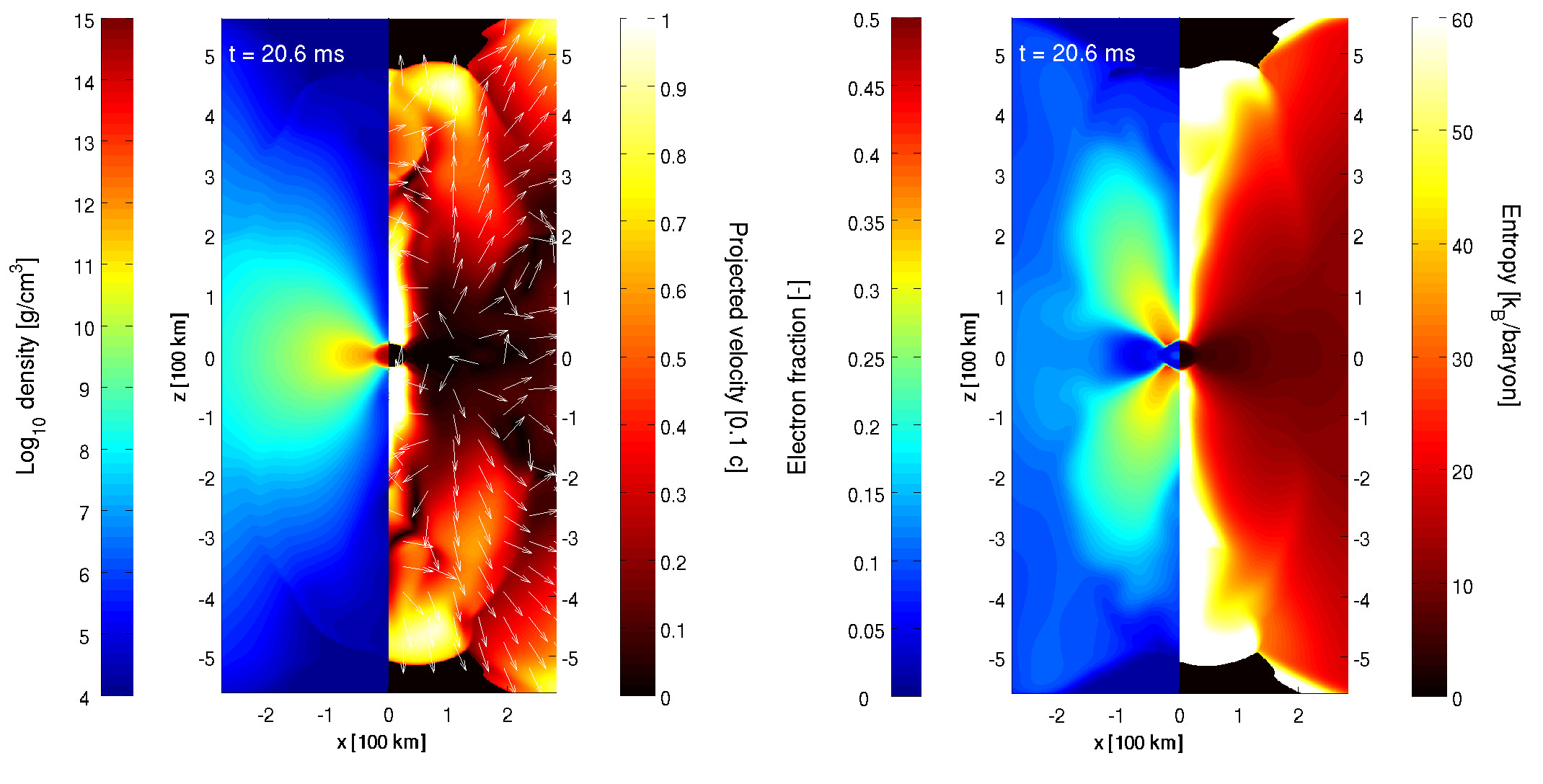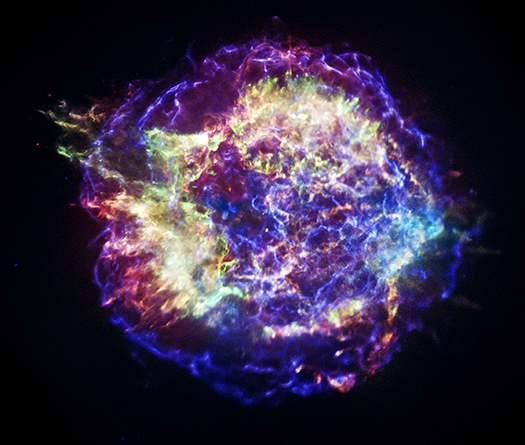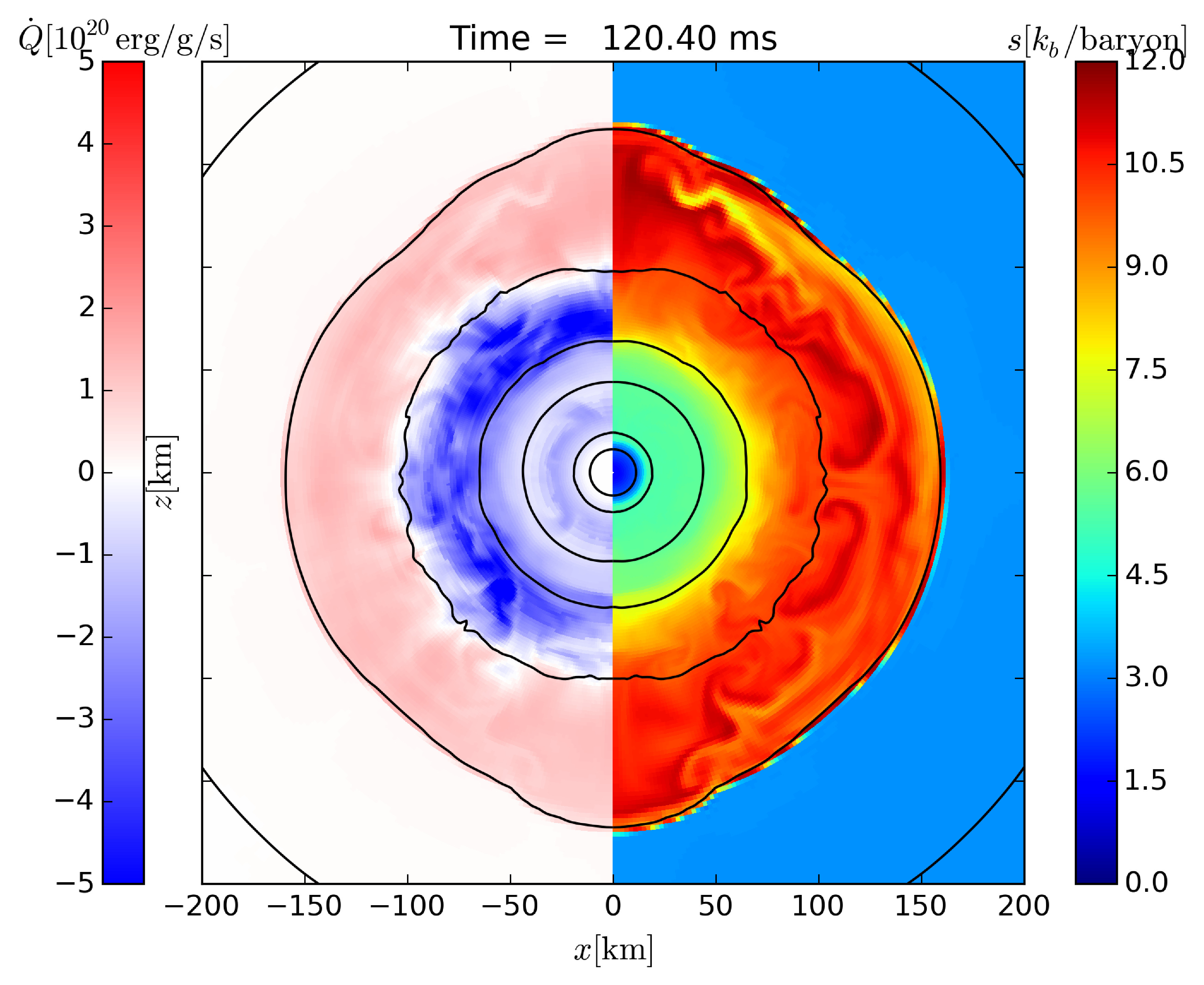My research interests
Theoretical and nuclear astrophysics, neutrino astrophysics, multimessenger astrophysics, gravitational waves, core-collapse supernovae, neutron star mergers, computational astrophysics.
Binary Neutron Star Merger
The merger of two neutron stars bound in binary system
is a remarkable consequence of the emission of gravitational waves by accelerated masses
and one of the most spectacular consequences of the Theory of General Relativity.
I have studied the role of weak interactions and neutrinos during the colaescence
of two neutron star in one of such mergers. These events, in addition to the emission
of gravitational waves, produce copius amounts of neutrinos of all flavor. The production
and theabsorption of electron type neutrinos and anti-neutrinos influence significantly
the composition of the ejected matter. This determines the subsequent r-process nucleosynthesis
and the electromagnetic emission powered by the radioactive decay of the newly produced
nuclei (kilonova emission).
Recently, I joined the CoRe (Computational Relativity) collaboration and together we have
studied the luminosity in gravitational waves of binary neutron star mergers. We have recently
released the largest up-to-date gravitational wave waveforms catalogue
http://www.computational-relativity.org/.
I am also part of the Virgo (Local Group Coordinator at Milano Bicocca) and ENGRAVE (the largest European consortion for the electromagnetic follow-up and interpretation of gravitational source counterparts, coordinator of the Theoretical working group) international collaborations to study both the
gravitational wave and electromagnetic emissions coming from compact binary mergers.
Core-Collapse Supernovae
Core-collapse Supernovae are among the most violent
and spectacular explosions in the Universe, marking the end of the life of a massive star.
On the one hand they produce black holes and neutron stars in their center. On the other hand, the
explosion expells into space a large portion of the progenitor star. This ejecta is one of
the major sources of new elements, contributing to the chemical evolution of the Universe.
During my studies, I developed a physically motivated and computationally inexpensive treatment
for neutrinos and weak reactions in multi-dimensional astrophysical simulations. Its first
application was the study of the magneto-rotationally driven explosion of a fast rotating,
magnetized iron core in 3D. In a large collaboration, we developed a novel parametrized model
to explode stars in spherical symmetry to study the explosive nucleosynthesis of a wide
set of progenitors including the effect of neutrinos.




